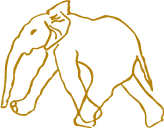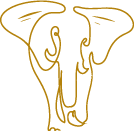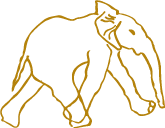ELEPHANT HISTORY




ELEPHANT HISTORY
In 1979, there were estimated to be 1.3 million elephants in Africa; ten years later, there were only about 600,000. By 2014 the Great Elephant Census estimated there were only around 352,000 elephants across Africa. In Kenya alone, the elephant population plummeted from 130,000 in 1973 to fewer than 20,000 in 1989, a tragic loss of 85%. These original losses were largely driven by the ivory trade, but modern declines have also been compounded by growing human populations and habitat loss.
The Amboseli elephant population is one of very few that has been able to live a relatively undisturbed existence. This rare situation is primarily due to two factors – the presence of researchers and tourists in the park, and the support of the local Maasai people.
In the absence of poaching and culling, the Amboseli elephant population has been increasing steadily since the late 1970s. Amboseli is, therefore, one of the few places in Africa where elephant age structure has not been drastically skewed by human activities. Our age structure spans birth to extreme old age, and we have documented elephants living into their 70s.
Realistic solutions to the problems facing Africa’s elephants need an appreciation of their long and complex lives. Studies in Amboseli have provided unique and critical information on elephant birth rates, death rates, ranging patterns and nutritional needs, with analyses of the underlying factors that alter population patterns. Our studies have also generated a deeper understanding of elephant behaviour. Elephants communicate at a very sophisticated level, they celebrate birth, have lifelong friendships and mourn the death of friends and family members. They are highly intelligent animals with the ability to reason and problem solve, and they live their lives inside a complex social structure.
We are proud that the discoveries made in Amboseli have contributed to altering the way in which humans approach the management of elephant populations. What was once viewed as “just a herd” must now be respected as a family of individuals. What was once seen as “ivory on the hoof” must be recognized as a matriarch whose knowledge keeps her family alive The “magnificent bull with 100-pound tusks” must be seen as a male in his reproductive prime, a vital component of elephant society who should be passing on his genes for health and longevity, and not as a trophy of a sport hunter.

